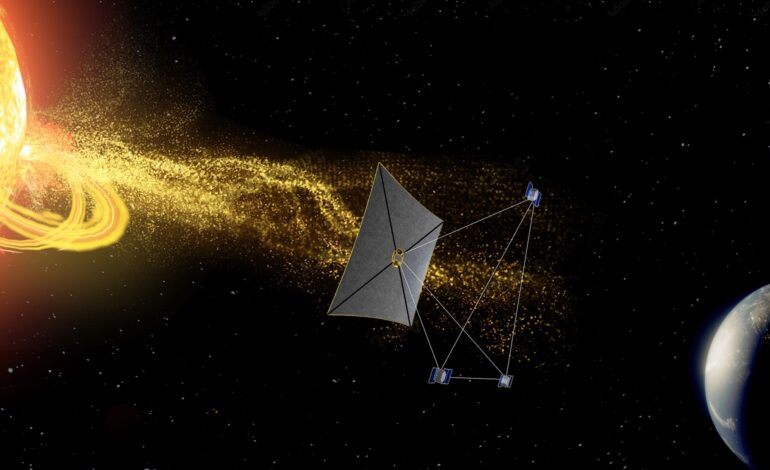Researchers Uncover New Threats from Space Tornadoes

Severe solar storms, akin to Earth’s thunderstorms, pose significant risks to our planet. In May 2024, eruptions from the sun unleashed massive plumes of charged plasma that disrupted power lines, altered satellite trajectories, and forced some aircraft to change their flight paths. These events highlight the vulnerabilities in our ability to monitor and prepare for solar activity, particularly regarding what researchers at the University of Michigan (UM) term “space tornadoes.” Their study, published on October 6 in The Astrophysical Journal, reveals a pressing need for improved monitoring solutions.
Understanding Space Tornadoes
Solar wind behaves similarly to Earth’s wind, involving a complex interplay of energy. Scientists have long studied the most intense examples of solar storms, known as coronal mass ejections (CMEs), which can span an average of 34 million miles. Current computer models can simulate variations as narrow as 7 million miles. However, smaller-scale phenomena, such as flux ropes measuring between 3,000 and 6 million miles, have largely gone unnoticed due to limitations in existing simulations.
The research team, including UM climate and space scientist Chip Manchester, developed a new simulation system to detect these smaller, yet potentially damaging, space tornadoes. “Our simulation shows that the magnetic field in these vortices can be strong enough to trigger a geomagnetic storm and cause some real trouble,” Manchester stated.
These space tornadoes often form when CMEs interact with slower solar winds, creating spinning plasma formations. While some dissipate harmlessly, others can collide with solar wind streams, leading to significant disruptions on Earth. Current solar telescopes are not equipped to identify these tornado-like structures, raising concerns about their implications for national security.
Proposed Solutions and Future Monitoring
Mojtaba Akhavan-Tafti, a co-author of the study, emphasized the urgency of developing proactive measures to identify these flux ropes. “We need to predict what they will look like at Earth to make reliable space weather warnings for electric grid planners, airline dispatchers, and farmers,” he noted.
To enhance monitoring capabilities, Akhavan-Tafti proposed the Space Weather Investigation Frontier (SWIFT) project, part of a NASA mission concept study. This initiative would deploy four identical spacecraft in a triangular pyramid formation approximately 200,000 miles apart, with a fifth hub spacecraft positioned at the apex. This configuration aims to improve detection of solar wind fluctuations, potentially accelerating warning times by 40 percent.
Nonetheless, the SWIFT project faces significant challenges, particularly concerning the energy requirements to counteract the sun’s gravitational pull. One potential solution involves integrating a solar sail, as proposed in NASA’s Solar Cruiser mission. This sail, about one-third the size of a football field, could harness photon energy to assist in stabilizing the spacecraft.
Currently, SWIFT remains a proposal rather than an active mission. It is envisioned as a preliminary step toward larger, more comprehensive monitoring systems. While the concepts of space tornadoes and solar sails may seem like science fiction, they are increasingly relevant to ensuring humanity’s safety as we navigate the complexities of our cosmic environment.






